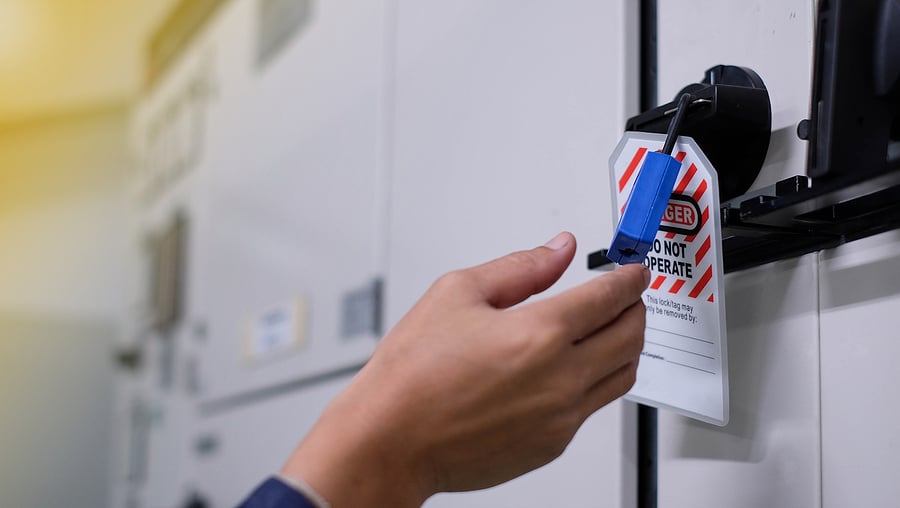 The isolation process is also widely known as 'Lockout / Tagout' and is used to isolate machinery and equipment from its energy source. It is generally used to isolate any potentially hazardous machinery/equipment from uncontrolled energy sources during repair, service or maintenance work. It can be used as a standalone safety process or as part of a Permit to Work requirement.
The isolation process is also widely known as 'Lockout / Tagout' and is used to isolate machinery and equipment from its energy source. It is generally used to isolate any potentially hazardous machinery/equipment from uncontrolled energy sources during repair, service or maintenance work. It can be used as a standalone safety process or as part of a Permit to Work requirement.
In some situations, the isolation process is sufficient by itself to ensure safety, for example when there is only a single source of risk, which can be eliminated by simply removing a fuse and locking off an electrical isolator switch. However, in more complicated cases, where there are several sources of risk, where the risk is more severe, such as with high voltage systems, or where complex procedures are needed before it is safe to start work, a permit to work may prove a useful addition to the process. The aim of the permit to work system is to ensure that the task is carried out in accordance with the conditions of a safe working plan and independently verified by competent individuals.
A permit to work system controls any dangerous work to ensure that it takes place as safely as possible. As part of the permit to work procedure, all safety precautions need to be identified and put in place including any relevant isolation procedures. It is important that the management of isolations is a disciplined and controlled process, and that adequate time and care is taken to ensure that the equipment is made safe. Therefore, isolating equipment is sometimes controlled by a separate special permit to work. This ensures that the proper precautions are taken, even when isolating equipment ahead of the main job.
As part of the preparations, all potential sources of energy must first be identified and made safe. This might mean switching off the electrical supply, depressurising the equipment, removing any sources of heat/cold, and securing any equipment from movement e.g. rolling/falling. Any process lines that contain hazardous fluids or gases must be properly shut off, disconnected and purged.
Additionally any stored energy (hydraulic or pneumatic power, for instance) should also be dissipated before the work starts. The basic rules are that there should be isolation from the power source and the isolator should be locked in position (for example by a padlock), and a sign should be used to indicate that maintenance work is in progress. As well as setting out the steps which must be taken before and during the task, permits to work should state any conditions to be met after the work is completed, i.e., the procedure for handing back the plant or area in a safe condition for normal operations.
